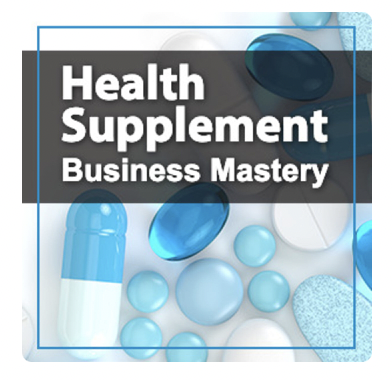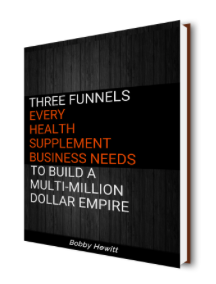Scaling a business online is very popular in the health supplement industry.
Online supplement marketers love to think in terms of scale.
It’s talked about at inner circles, masterminds and conferences all the time.
But how do you do it? What key pieces do you need to have in place before you can scale? And what does it actually mean to scale online?
Many of our supplement clients have scaled at breakneck speeds, often because of optimization we’ve helped them with.
Scaling your supplement business is possible but it’s also tricky if you don’t know what to watch out for.
But first…
What does it mean to scale a business?
The definition of scaling a business is really straight forward.
Scaling is basically increasing in size.
Size, in the case of supplement businesses, is net profit and life time value (LTV).
Different business owners think in different terms. Like scaling sales through conversion optimization or scaling traffic through more visitors.
In the end profit and LTV are what really matters when trying to scale your business.
What you need to know when scaling a business?
A business can scale traffic, by getting more visitors to a sales page.
Or it can scale sales by getting more people that visit a sales page to buy through conversion rate optimization.
Both however go hand in hand.
With so many different perspectives of scale, sales, traffic, etc. it makes it seem a bit daunting at first.
But there are only really two ways a business can scale.
Vertically and horizontally.
You can scale up traffic vertically by increasing your ad budgets.
Or you can scale out horizontally by broadening your reach across audiences and hooks.
Most people just think of the first kind of scaling a business. Scaling vertically with more traffic.
But, you should do both and I’ll tell you why. But first what do I mean by horizontal scale?
Scaling out horizontally is typically easier than scaling vertically.
Scaling a business horizontally can happen in two ways.
The first way involves adding different audiences to your ad traffic.
The second way is to find different hooks.
Both ways work together to successfully scale businesses.
With horizontal scaling you’re broadening the scope of who your supplement is for.
Once you have learning’s through split testing and optimization. You’ll know what works for what audience segment.
You can then scale vertically with each horizontal segment.
What do you need before you can scale a business?
Before you can scale a business or a funnel, you first need to have a few things in place.
When focusing on scaling vertically you need to dial in your ad campaign in a single advertising channel.
Your key performance indicators will tell you that you may be onto something ready to scale.
If there are some ad sets and campaigns that are profitable on day one. That’s a sign it’s time to increase the budgets for those ads if you can scale them.
In all likelihood, you’ll break your ad campaign.
And they will almost always break.
Meaning they will slip in profitability on day one. That’s okay.
The game you’re playing is pull on one string and another pulls back.
That’s why a/b testing is a consistent thing you never want to stop doing.
It’s the fastest way to get those strings back in line again.
Because any time to increase volume (more people) than data will change.
Horizontal vs. Vertical Scaling
Scaling horizontally makes sense when your campaign is experiencing ad or audience fatigue.
In which case, horizontal scale becomes your best friend.
Horizontal scaling means testing new hooks and angles. At most this requires a new big idea and A/B tests around everything that ties into the big idea.
At the very least this requires new ad creative, just to measure clickthrough rates.
Then move to testing a new headline and lead.
Horizontal scale also means testing new audiences.
To try to find different types of people that find your offer appealing.
Most people simply widen the top of the net at the ad campaign level but that’s not what works most effectively.
A better approach is to take your existing health supplement and change who it is for.
Many supplements have a wide audience already and are either going too broad or making it work by narrowing down.
For example, a way to horizontally scale would be to take your supplement and market it to a different group.
If you have a sleep supplement, you can scale it horizontally by creating a dedicated landing page that sells sleep just to moms. Where all the sales copy talks directly to tired moms who’ve spent all day taking care of everyone else but themselves.
Finally horizontal scale can also come in the form of testing different types of ad creative.
For example taking your ad creative and creating different formats of it, like video vs. image only.
I would even go so far as to say you should be horizontally scalling all the time. Even before your metrics begin to take a dip.
Scaling horizontally early on mitigates the inevitable decline of all campaigns.
Avoid these business scaling mistakes
The one thing no one tells you is that scaling a business is froth with pitfalls.
There is no other way to scale because it’s not a linear path.
Scaling is a constant push and pull along the way to more sales.
When you scale traffic you pull in more people and they don’t always behave the same way, so you start to see a dip in your conversion rate.
That’s why constant A/B testing is so important.
But if that was the only pushback against your pull, you’d be lucky.
The common advice is to wait on increasing your ad budget until your conversion event gets to 300 conversions.
Scaling traffic before this leads to wonky performance and really screws up the data engine of the traffic source.
To get more people to your landing page you need to increase your ad budget.
If you do that too fast, your ad campaign could go back into the learning phase.
Resulting in a performance hit.
The best way to scale budget is slowly. Increasing no more than 25% each day.
Horizontal scaling mistakes
One way to avoid just turning up the faucet on ads, is to scale your ad campaigns horizontally.
Horizontal scale means adding different audiences.
Adding them as new campaigns is the best approach there.
But with more audiences, you’ll have more to manage. Be sure to not over extend your management capacity.
There’s only so much you’ll be able to keep an eye on at once.
Most people lean towards automation to help solve this problem but you have to be careful not to optimize too early with automated rules.
Even though many ad platforms push you to do this. You don’t want to add too much complexity because then you won’t know what’s working once things break.
Not knowing what’s working limits your ability to scale.
Another scaling mistake most people overlook is outside of the ad platform.
That is in the area of logistics and inventory.
Aligning your fulfillment and supply chain with expected demand will save you from crashing and burning once you do scale.
It’s not really a good problem to have when you’re scaling.
Think about it. You’ve been scaling horizontally and vertically.
Slowly ramping up your spend 25% each time.
A/B testing landing pages, offers and checkout flows and just when your ad campaigns are starting to get traction…
Or worse once they have traction. You are forced to put the breaks on because you can’t fulfill orders.
All of the ad algorithm learning’s go away in an instant put of smoke.
The worst thing you can do is stop an ad campaign.
What scaling tactics should you employ?
Now that you know what to avoid, let’s close this out with some quick scaling tactics.
If you have a funnel that’s working one quick thing you can do is to duplicate your ad sets that are working.
By duplicating the good ad sets, you’re telling the ad algorithm that it’s doing a good job, keep looking so you can find more profitable ad set pockets.
On the traffic side duplicating the ad set is a good idea along with doubling down on the budget.
Many of our supplement clients are spending five or six figures a day on ad spend when in hyper growth mode.
The second quick scaling tactic is to use alternative bidding.
Shaking up your bidding strategy sometimes forces the algorithm to find another profit center.
One quick way to do this is to simply double your ad budget over a couple days.
Don’t let the ad algorithm get comfortable.
Don’t be afraid to break what’s working.
If you don’t you’ll never push beyond your limits.
Is your supplement business ready to scale?
This advice is not for the supplement start up.
Breaking your ad campaign, navigating through ad creative fatigue and audience fatigue… All of these things will happen to you as you scale.
There is no way to scale without some damage along the way.
Even with a conservative approach of increasing your ad budget by 25% every 3 days, you’ll have some dips.
That’s the nature of scaling.
But if you can get through the dip and optimize along the way.
You can scale to more buyers and bigger profits.
Discover the 3 funnels that can help your health supplement business succeed.

Listen to the Health Supplement Business Mastery Podcast for for dietary supplement entrepreneurs and marketers.



